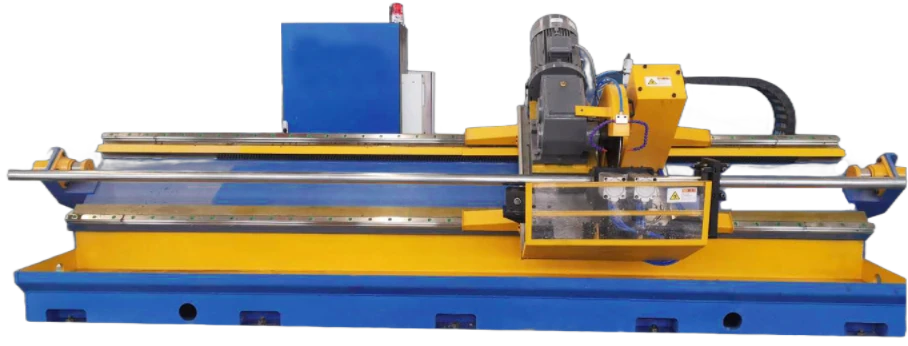Efficient Techniques for Cutting Round Pipes in Fabrication Projects
The Art and Precision of Round Pipe Cutting
In industries ranging from construction to manufacturing, the ability to cut pipes accurately and efficiently is essential. Round pipe cutting is a fundamental task that not only requires precision but also involves understanding the various techniques and tools available. This article delves into the processes involved in round pipe cutting, the tools used, and the significance of accuracy in ensuring seamless project execution.
Understanding Round Pipe Cutting
Round pipe cutting refers to the process of slicing cylindrical pipes into desired lengths or shapes. This task is prevalent in plumbing, HVAC systems, and structural applications, where the integration of round pipes is crucial. The need for precision arises because cutting pipes inaccurately can lead to waste, increased project costs, and potential safety hazards.
Common Techniques
There are several methods employed in round pipe cutting, each suitable for different materials, thicknesses, and diameters
. Here are some popular techniques1. Sawing This is one of the most common methods for cutting pipes. Different types of saws can be employed, including band saws, circular saws, and hacksaws. Each type has its advantages depending on the material of the pipe and the desired finish.
2. Pipe Cutters These specialized tools are designed specifically for cutting round pipes. They consist of a circular blade and a gripping mechanism that clamps onto the pipe. As the tool is rotated, it progressively cuts through the material, offering clean and precise cuts. Pipe cutters are particularly effective for thin-walled pipes and can be used in tight spaces where a saw might not fit.
round pipe cutting

3. Oxy-Acetylene Cutting For thicker pipes, particularly those made of metal, oxy-acetylene cutting is often utilized. This process involves using a flame produced by the combustion of oxygen and acetylene gas to melt and separate the pipe material. This method is efficient for heavy-duty applications, but it requires skill to control the heat and avoid warping the pipe.
4. Plasma Cutting This technique employs a high-velocity jet of ionized gas to cut through electrically conductive materials. Plasma cutting is particularly advantageous for larger pipes or industrial applications where speed and precision are critical.
The Importance of Precision
Precision in round pipe cutting cannot be overstated. A small error in the cutting process can lead to significant repercussions downstream. For instance, an inaccurately cut pipe may not fit properly into joints or connectors, leading to leaks or structural weaknesses. Furthermore, wasted materials mean increased costs and delays in project timelines.
Accuracy is also vital in ensuring compatibility with existing systems. In plumbing or HVAC designs, each component must interact seamlessly for efficiency and safety. Therefore, rounded edges and clean cuts are not just aesthetic but are crucial for the overall functionality of the system.
Conclusion
Round pipe cutting is a blend of art and science, requiring a profound understanding of the materials involved and the tools at one's disposal. As technology advances, new methods and tools continue to emerge, enhancing the efficiency and accuracy of this process. Whether in a small workshop or on a large construction site, the skills involved in round pipe cutting play a pivotal role in the quality and integrity of the final product.
In summary, mastering round pipe cutting techniques will not only elevate craftsmanship but also contribute to the successful execution of various projects across different industries. The future of round pipe cutting lies in continual innovation, ensuring that this foundational skill remains relevant and indispensable.
-
High Frequency Straight Seam Welded Pipe Production Line-BzZhou Xinghua Machinery Equipment Manufacturing Co., LTD.|line pipe steel&welded gas pipeNewsJul.30,2025
-
High Frequency Straight Seam Welded Pipe Production Line-BzZhou Xinghua Machinery Equipment Manufacturing Co., LTD.|High Precision&Automated SolutionsNewsJul.30,2025
-
High Frequency Straight Seam Welded Pipe Production Line - BzZhou Xinghua Machinery Equipment Manufacturing Co., Ltd.NewsJul.30,2025
-
High Frequency Straight Seam Welded Pipe Production Line-BzZhou Xinghua Machinery Equipment Manufacturing Co., LTD.|Precision Welding, High EfficiencyNewsJul.30,2025
-
High Frequency Straight Seam Welded Pipe Production Line|BzZhou Xinghua|Precision Welding&EfficiencyNewsJul.30,2025
-
High Frequency Straight Seam Welded Pipe Production Line - BzZhou Xinghua|Precision Engineering&EfficiencyNewsJul.30,2025


